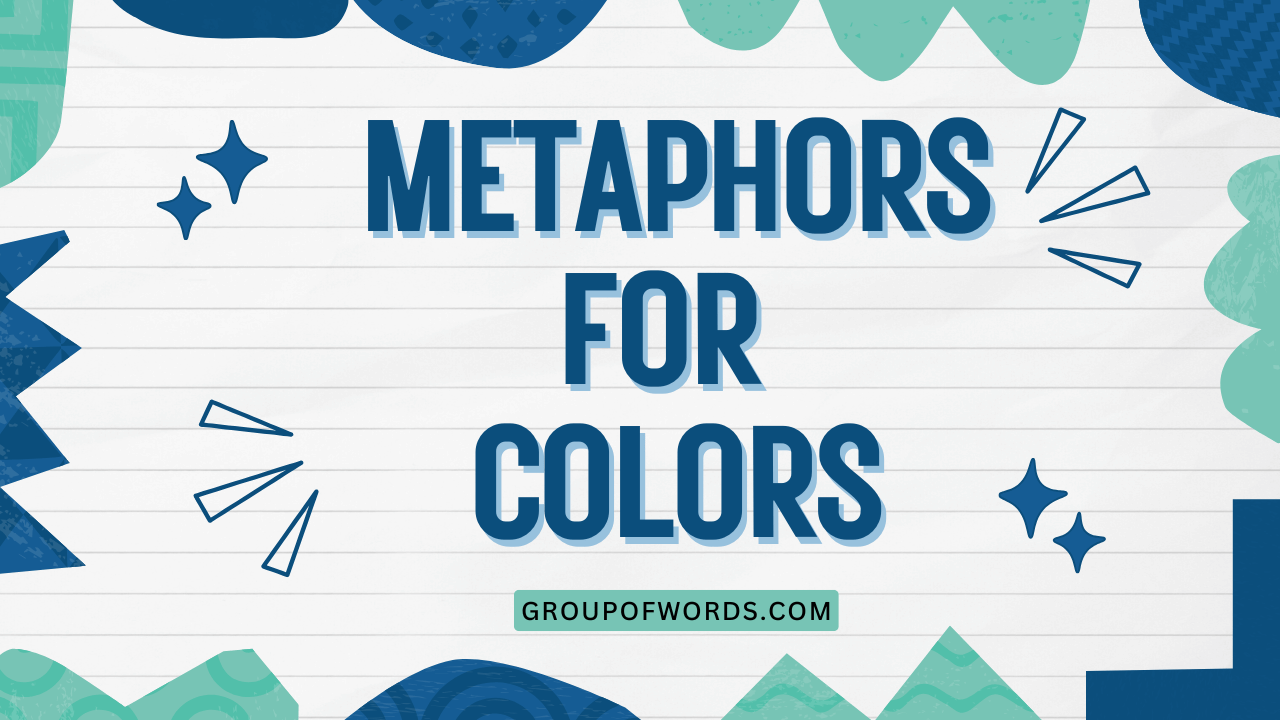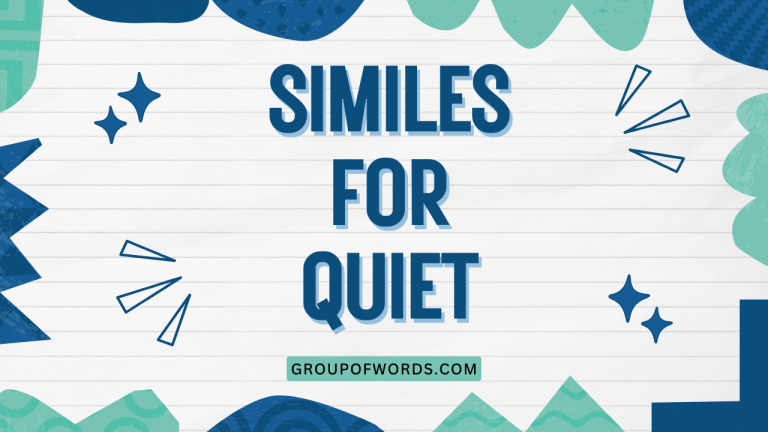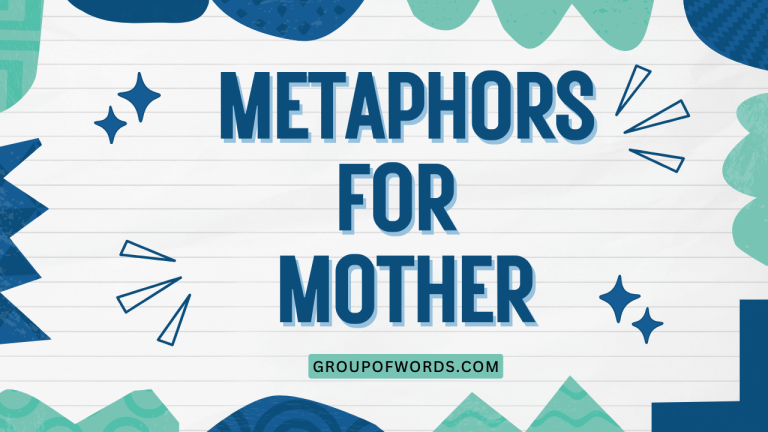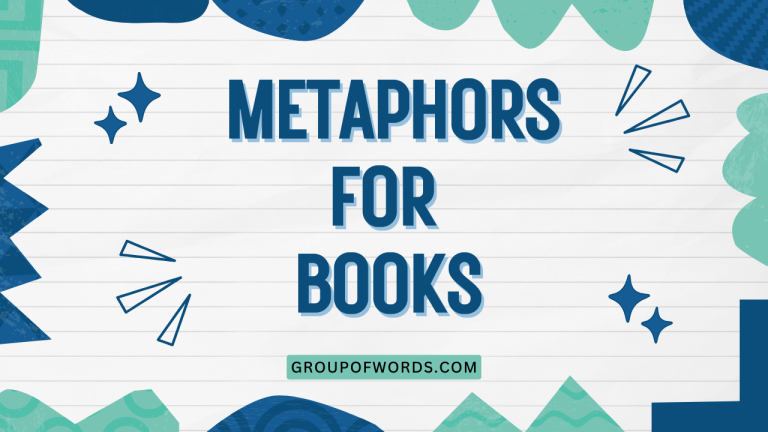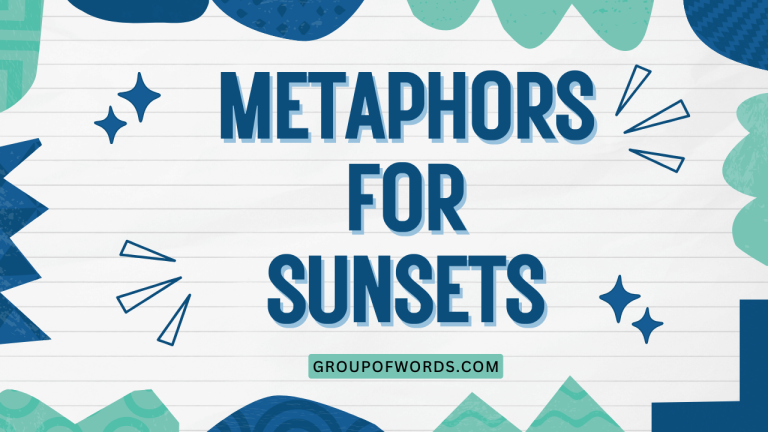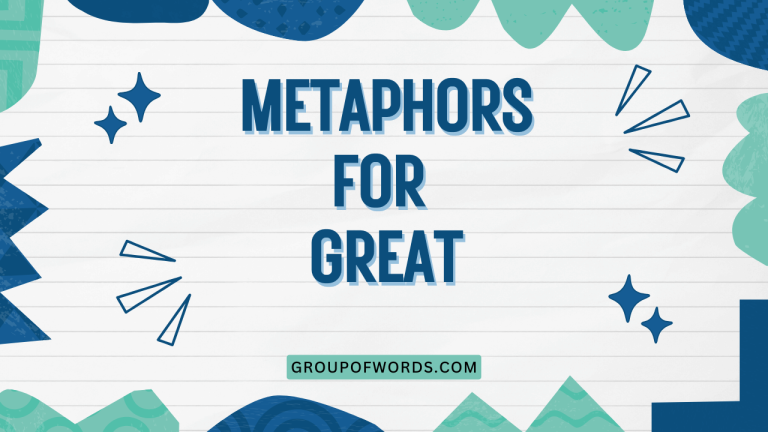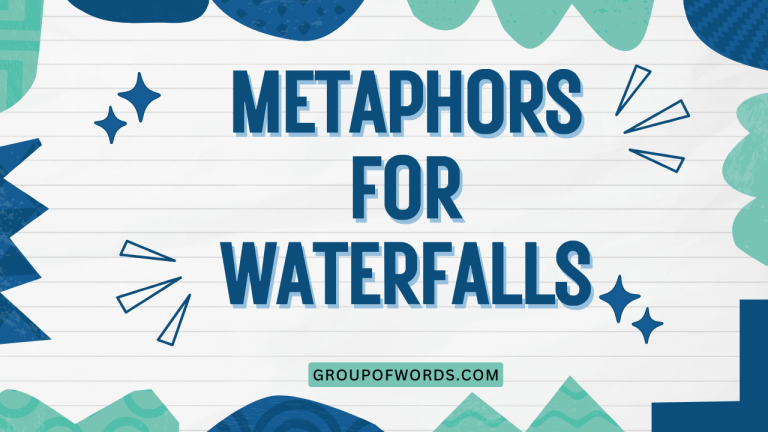Colorful Language: Mastering Metaphors for Colors
Colors are fundamental to our perception of the world, and metaphors are essential to how we express abstract ideas. Combining the two allows us to imbue language with vivid imagery and emotional depth.
Understanding metaphors for colors enhances our ability to interpret literature, appreciate art, and communicate more effectively. This article provides a comprehensive guide to color metaphors, exploring their meanings, usage, and cultural significance.
Whether you’re an English language learner, a writer seeking to enrich your prose, or simply someone fascinated by the nuances of language, this guide will help you master the colorful world of metaphors.
This article is structured to provide a comprehensive understanding of color metaphors, starting with a clear definition and progressing through various types, examples, usage rules, common mistakes, and practice exercises. Advanced topics and frequently asked questions are also included to cater to learners of all levels.
By the end of this guide, you will be well-equipped to recognize, interpret, and use color metaphors with confidence and creativity.
Table of Contents
- Definition of Color Metaphors
- Structural Breakdown of Color Metaphors
- Types of Color Metaphors
- Examples of Color Metaphors
- Usage Rules for Color Metaphors
- Common Mistakes with Color Metaphors
- Practice Exercises
- Advanced Topics in Color Metaphors
- Frequently Asked Questions (FAQ)
- Conclusion
Definition of Color Metaphors
A color metaphor is a figure of speech that uses a color to represent an abstract idea, emotion, or characteristic. Unlike similes, which use “like” or “as” to make a comparison, metaphors directly equate a color with the concept it’s meant to convey.
This creates a more powerful and evocative image in the reader’s mind. Color metaphors are prevalent in literature, poetry, everyday conversation, and various forms of art.
They enrich language by adding layers of meaning and emotional resonance.
For example, saying someone is “feeling blue” doesn’t literally mean they’ve turned the color blue. Instead, it uses the association of the color blue with sadness to express their emotional state.
Similarly, describing a person as “green with envy” uses the color green to symbolize jealousy or resentment. The effectiveness of a color metaphor relies on shared cultural understandings and emotional associations linked to specific colors.
Understanding these associations is crucial for both interpreting and creating effective color metaphors.
Color metaphors function as a type of figurative language known as **conceptual metaphor**. Conceptual metaphors are underlying cognitive structures that shape how we understand abstract concepts in terms of more concrete experiences.
In the case of color metaphors, the physical sensation and perception of color are used to understand and express complex emotions and ideas. They are a powerful tool for writers and speakers to create vivid imagery and convey nuanced meanings.
Structural Breakdown of Color Metaphors
The structure of a color metaphor is straightforward: it typically involves a subject (the person, object, or situation being described) and a color term used metaphorically. The color term carries the weight of the abstract meaning.
The connection between the subject and the color is often implicit, relying on the reader’s or listener’s understanding of the color’s associated meanings.
Consider the phrase “a white lie.” Here, “lie” is the subject, and “white” is the color term. The color white, typically associated with purity and innocence, is used to suggest that the lie is harmless or well-intentioned.
The structure can be represented as:
[Subject] + [Color Term (metaphorically)]
This basic structure can be elaborated upon with adjectives, adverbs, and other descriptive elements to create more complex and nuanced metaphors. For example, “a pitch-black night” adds the adjective “pitch” to intensify the darkness associated with the color black, emphasizing the depth and intensity of the night’s darkness.
The effectiveness of a color metaphor also depends on the context in which it’s used. A color that has positive connotations in one context might have negative connotations in another.
For instance, “red” can symbolize passion and love, but it can also represent anger and danger. Therefore, understanding the context and cultural associations of a color is crucial for interpreting and using color metaphors accurately.
Types of Color Metaphors
Color metaphors can be broadly categorized based on the types of associations they evoke. These categories include emotional associations, symbolic representations, and sensory analogies.
Each category provides a different lens through which to understand and interpret the meaning of color metaphors.
Emotional Associations
Emotional associations are perhaps the most common type of color metaphor. Colors are often linked to specific emotions, and these associations are used to express feelings in a more vivid and relatable way.
For example, blue is frequently associated with sadness, while red is often linked to anger or passion. These emotional associations are often deeply ingrained in cultural understanding and personal experience.
The following table provides some common emotional associations with different colors:
| Color | Common Emotional Associations |
|---|---|
| Red | Anger, passion, love, excitement, danger |
| Blue | Sadness, calmness, peace, tranquility, depression |
| Green | Envy, jealousy, nature, growth, freshness |
| Yellow | Happiness, joy, optimism, cowardice, deceit |
| Black | Sadness, mourning, death, mystery, despair |
| White | Innocence, purity, peace, cleanliness, emptiness |
Understanding these emotional associations is crucial for interpreting color metaphors accurately. When someone says they are “feeling blue,” it’s important to recognize that they are expressing sadness or depression, not simply stating a preference for the color blue.
Symbolic Representations
Colors can also carry symbolic meanings that extend beyond simple emotional associations. These symbolic representations are often rooted in cultural traditions, historical events, or religious beliefs.
For example, in many Western cultures, white is associated with purity and innocence, often worn at weddings. In contrast, in some Eastern cultures, white is associated with mourning and funerals.
The following table illustrates some common symbolic representations of colors:
| Color | Common Symbolic Representations |
|---|---|
| Red | Power, revolution, war, sacrifice |
| Blue | Loyalty, trust, authority, stability |
| Green | Hope, renewal, prosperity, fertility |
| Yellow | Caution, intellect, enlightenment, divinity |
| Black | Formality, elegance, sophistication, evil |
| White | Purity, innocence, peace, surrender |
These symbolic representations can be used to create powerful and evocative metaphors. For example, describing a political movement as “a sea of red” can evoke images of revolution and passion.
Similarly, referring to a company’s branding as “a symbol of blue” can suggest trustworthiness and stability.
Sensory Analogies
In some cases, colors can be used to create metaphors that appeal to other senses. These sensory analogies involve associating a color with a sound, taste, smell, or texture.
For example, a bright yellow might be described as “loud” or “shrill,” while a deep blue might be associated with a “cool” or “calm” texture.
The use of sensory analogies can add depth and complexity to color metaphors, creating a more immersive and engaging experience for the reader or listener. It allows for a synesthetic effect, where one sense is described in terms of another.
Examples of sensory analogies include:
- “The music had a golden tone,” associating yellow (gold) with the sound of music.
- “His voice was a deep, velvet purple,” linking purple with a soft, rich texture.
- “The air smelled of green,” connecting the color green with a fresh, natural scent.
Examples of Color Metaphors
This section provides a wide range of examples of color metaphors, categorized by color. Each category includes examples of how the color is used to represent different emotions, ideas, and characteristics.
Red Metaphors
Red is a powerful color often associated with strong emotions and concepts. It can represent passion, love, anger, danger, and excitement.
The following table provides examples of red metaphors in different contexts.
| Example | Meaning |
|---|---|
| He saw red when he heard the news. | He became very angry. |
| She painted the town red. | She had a wild and exciting night. |
| The red tape is holding up the project. | Bureaucratic procedures are causing delays. |
| A red flag went up in his mind. | He sensed a potential problem or danger. |
| She was caught red-handed. | She was caught in the act of doing something wrong. |
| The sunset painted the sky in fiery reds. | The sunset created a vibrant and passionate display of colors. |
| Her cheeks flushed red with embarrassment. | She became visibly embarrassed. |
| He was in the red due to excessive spending. | He was in debt or losing money. |
| The politician’s fiery speech was full of red meat. | The speech contained controversial and provocative content. |
| The company’s annual report showed a sea of red. | The company suffered significant financial losses. |
| The emergency lights cast a red glow over the scene. | The lights indicated danger or urgency. |
| He marched into the battle with a red mist in his eyes. | He was blinded by rage and determination. |
| She wore a striking red dress to the party. | She wore a dress that was bold and attention-grabbing. |
| The warning signs were all in red. | The signs indicated imminent danger. |
| He saw the world through rose-colored glasses, but her world was red. | He was optimistic, while she was angry and disillusioned. |
| Her red hair stood out in the crowd. | Her hair was a distinctive and noticeable feature. |
| The project was a red-hot success. | The project was extremely successful and popular. |
| His temper was like a raging red fire. | His anger was intense and uncontrollable. |
| She had a red-letter day when she received the award. | It was a day of great significance and celebration. |
| The scandal turned the politician’s career into a red alert situation. | The scandal posed a severe and immediate threat to his career. |
These examples demonstrate the versatility of red metaphors in conveying a wide range of emotions and ideas. By understanding these associations, you can use red metaphors effectively in your own writing and communication.
Blue Metaphors
Blue is often associated with calmness, peace, sadness, and depression. It can also represent trust, loyalty, and stability.
The following table provides examples of blue metaphors in different contexts.
| Example | Meaning |
|---|---|
| He was feeling blue after the breakup. | He was feeling sad or depressed. |
| The sky was a clear, endless blue. | The sky was a beautiful and peaceful color. |
| The company’s branding is all about blue. | The company wants to project an image of trust and reliability. |
| Out of the blue, she announced her engagement. | Unexpectedly or suddenly, she announced her engagement. |
| He sang the blues all night. | He sang sad, melancholic songs. |
| She has the blues every monday. | She feels sad every monday. |
| I have a blue feeling about this plan. | I have a bad feeling about this plan. |
| The lake was a sapphire blue. | The lake was a beautiful, deep blue color. |
| He was a true blue friend. | He was a loyal and dependable friend. |
| She felt a wave of the blues wash over her. | She felt a sudden and intense wave of sadness. |
| The ocean stretched out before them, a vast expanse of blue. | The ocean was a wide and calming presence. |
| He was blue in the face arguing his point. | He was exhausted and frustrated from arguing. |
| The report painted a blue picture of the company’s future. | The report presented a bleak and pessimistic outlook. |
| She wore a blue ribbon for her winning entry. | She received recognition for her outstanding achievement. |
| The evening sky was a canvas of deep blues and purples. | The sky displayed a beautiful and tranquil array of colors. |
| He felt blue after losing the game. | He felt sad or disappointed after the loss. |
| The company’s financial outlook was looking a bit blue. | The company’s financial prospects were uncertain and concerning. |
| She had a case of the Mondays, feeling blue and unmotivated. | She felt sad and lacking energy at the start of the week. |
| The music was a soothing, calming blue. | The music had a peaceful and relaxing quality. |
| He was caught between the devil and the deep blue sea. | He was in a difficult situation with no easy solution. |
These examples illustrate how blue metaphors can be used to convey a range of emotions and ideas related to calmness, sadness, and reliability. Understanding these associations can help you interpret and use blue metaphors effectively.
Green Metaphors
Green is often associated with nature, growth, envy, and jealousy. It can also represent freshness, hope, and prosperity.
The following table provides examples of green metaphors in different contexts.
| Example | Meaning |
|---|---|
| She was green with envy when she saw his new car. | She was very jealous of his new car. |
| The project was given the green light. | The project was approved to proceed. |
| He’s a greenhorn in the industry. | He’s a novice or beginner in the industry. |
| The grass is always greener on the other side. | Other situations always seem more desirable than one’s own. |
| He has a green thumb. | He is good at gardening. |
| The company is going green. | The company is becoming environmentally friendly. |
| The fields were lush and green. | The fields were vibrant and full of life. |
| The politician’s ideas were seen as too green. | The ideas were considered naive or unrealistic. |
| She was green with sea sickness. | She felt nauseous from sea sickness. |
| The economy is showing signs of green shoots. | The economy is showing early signs of recovery. |
| The forest was a sea of green. | The forest was a vast and flourishing ecosystem. |
| He felt green around the gills after the rollercoaster. | He felt nauseous and unwell after the ride. |
| The new initiative aims to create a greener future. | The initiative aims to promote environmental sustainability. |
| She was green with inexperience. | She lacked the knowledge and skills necessary for the task. |
| The landscape was a vibrant tapestry of greens and browns. | The landscape was a diverse and natural environment. |
| He was green with hope for the future. | He felt optimistic and encouraged. |
| The project was given the green flag to proceed. | The project was granted official approval to move forward. |
| She had a green card, allowing her to work in the country. | She had legal permission to work in the country. |
| The product was designed with green principles in mind. | The product was created using environmentally friendly practices. |
| He was a green recruit, fresh out of training. | He was a new and inexperienced member of the team. |
These examples demonstrate how green metaphors can be used to convey ideas related to nature, envy, growth, and inexperience. Understanding these associations can help you interpret and use green metaphors effectively.
Yellow Metaphors
Yellow is often associated with happiness, joy, optimism, but also can have negative connotations such as cowardice or deceit. The following table provides examples of yellow metaphors in different contexts.
| Example | Meaning |
|---|---|
| He has a yellow streak. | He is cowardly or easily frightened. |
| The sunflowers painted the field yellow. | The sunflowers made the field bright and cheerful. |
| Yellow journalism often exaggerates the truth. | Journalism that is sensationalist and often inaccurate. |
| The warning lights flashed yellow. | The lights indicated caution or potential danger. |
| He felt a yellow tinge of envy. | He felt a slight bit of envy. |
| The old paper had turned yellow with age. | The old paper had discolored over time. |
| The lemons were a bright, cheerful yellow. | The lemons looked vibrant and inviting. |
| He was a yellow-bellied coward. | He was extremely cowardly and easily scared. |
| The taxi cab was a classic yellow. | The taxi cab was a standard yellow color. |
| She wore a sunshine yellow dress. | She wore a bright and cheerful dress. |
| The autumn leaves turned a vibrant yellow. | The leaves displayed a beautiful and golden hue. |
| He was feeling yellow, as if he was coming down with a cold. | He felt unwell and slightly feverish. |
| The old film had a yellow cast to it. | The film appeared faded and discolored. |
| She had a yellow stain on her favorite shirt. | She had a noticeable stain that was difficult to remove. |
| The antique lamp cast a warm, yellow glow. | The lamp provided a cozy and inviting light. |
| He was yellow with fear during the horror movie. | He was visibly frightened and anxious. |
| The daffodils created a yellow carpet in the garden. | The flowers formed a beautiful and cheerful display. |
| She had a yellow umbrella to brighten up rainy days. | She had a cheerful and uplifting accessory. |
| The artist used yellow hues to convey happiness. | The artist employed shades of yellow to express joy. |
| He saw the world through yellow-tinted glasses, always optimistic. | He had a consistently positive and cheerful outlook. |
These examples demonstrate how yellow metaphors can be used to convey ideas related to happiness, cowardice, and caution. Understanding these associations can help you interpret and use yellow metaphors effectively.
Black Metaphors
Black is often associated with sadness, mourning, death, mystery, and despair. It can also represent formality, elegance, and sophistication.
The following table provides examples of black metaphors in different contexts.
| Example | Meaning |
|---|---|
| He was in the black after a successful year. | He was making a profit or had a positive balance. |
| She wore a black dress to the funeral. | She wore a dress appropriate for mourning. |
| It was a black day in history. | It was a tragic or disastrous day. |
| The future looked black. | The future looked bleak or hopeless. |
| He was blacklisted from the industry. | He was banned or excluded from the industry. |
| The night was pitch black. | The night was extremely dark. |
| She had a black sense of humor. | She had a dark or morbid sense of humor. |
| He cast a black look at his rival. | He gave a hostile or angry stare. |
| The coffee was black as night. | The coffee was very strong and dark. |
| She was dressed in all black. | She wore a complete outfit of black clothing. |
| The shadows were long and black. | The shadows were dark and ominous. |
| He had a black mark on his record. | He had a negative or unfavorable entry. |
| The rumors cast a black cloud over the company. | The rumors created a sense of gloom and uncertainty. |
| She had a black mood all day. | She was in a negative or depressed state. |
| The ink was black and bold. | The ink was dark and easy to read. |
| He had a black heart, devoid of compassion. | He was cruel and unfeeling. |
| The night was a black canvas dotted with stars. | The sky was dark and illuminated by stars. |
| She had a black belt in karate. | She had a high level of skill and expertise. |
| The comedy had a black edge to it. | The comedy was dark and satirical. |
| He saw the situation in black and white terms. | He viewed the situation as simple and without nuance. |
These examples demonstrate how black metaphors can be used to convey ideas related to sadness, formality, and negativity. Understanding these associations can help you interpret and use black metaphors effectively.
White Metaphors
White is often associated with innocence, purity, peace, and cleanliness. It can also represent emptiness or surrender.
The following table provides examples of white metaphors in different contexts.
| Example | Meaning |
|---|---|
| It was a white lie. | It was a harmless or trivial lie. |
| She wore white to her wedding. | She wore a dress symbolizing purity and innocence. |
| He waved the white flag. | He surrendered or gave up. |
| The snow was a blanket of white. | The snow covered everything in a pristine layer. |
| He was as white as a ghost. | He was pale from fear or shock. |
| The walls were painted white. | The walls were painted a neutral and clean color. |
| She had a white smile. | She had a bright and radiant smile. |
| He was a knight in shining white armor. | He was a heroic and virtuous figure. |
| The clouds were fluffy and white. | The clouds were soft and pure in appearance. |
| She had a white picket fence around her house. | She had a fence symbolizing peace and domesticity. |
| The paper was crisp and white. | The paper was clean and new. |
| He was white with anger. | He was pale and shaking with rage. |
| The room was a sea of white. | The room was predominantly decorated in white. |
| She had a white streak in her hair. | She had a strand of hair that was noticeably white. |
| The sandy beach was white and pristine. | The beach was clean and untouched. |
| He had a white-collar job in the city. | He had a professional or office-based job. |
| The dove was a symbol of white peace. | The dove represented harmony and tranquility. |
| She had a white Christmas. | She had a Christmas with plenty of snow. |
| The walls were painted a stark white. | The walls were painted a bright and minimalist white. |
| He whitened with fear as the monster approached. | He turned pale with fright. |
These examples demonstrate how white metaphors can be used to convey ideas related to innocence, purity, and peace. Understanding these associations can help you interpret and use white metaphors effectively.
Usage Rules for Color Metaphors
Using color metaphors effectively requires an understanding of their common associations and the context in which they are used. Here are some key usage rules to keep in mind:
- Know the common associations: Each color has certain established meanings. Use these associations to your advantage. For example, use “blue” to suggest sadness or “red” to suggest anger.
- Consider the context: The meaning of a color can change depending on the situation. “Red” can mean passion in one context and danger in another.
- Avoid clichés: While some color metaphors are common, try to find fresh and original ways to use them. Overused metaphors can lose their impact.
- Be culturally sensitive: Color associations can vary across cultures. Be aware of these differences to avoid misunderstandings.
- Use sparingly: Overusing color metaphors can make your writing feel forced or unnatural. Use them strategically to create the greatest impact.
- Ensure clarity: The meaning of your metaphor should be clear to the reader. If the association is too obscure, it may not be effective.
By following these usage rules, you can use color metaphors to enrich your writing and communication, adding depth, emotion, and imagery to your message.
Common Mistakes with Color Metaphors
Even with a good understanding of color metaphors, it’s easy to make mistakes. Here are some common errors to avoid:
| Incorrect | Correct | Explanation |
|---|---|---|
| He was feeling green with sadness. | He was feeling blue with sadness. | “Green” is typically associated with envy, not sadness. “Blue” is the correct color metaphor for sadness. |
| She saw white when she was angry. | She saw red when she was angry. | “Red” is the common metaphor for anger, not “white.” |
| The future looked yellow. | The future looked bleak. | “Yellow” does not typically represent a bleak or hopeless situation. “Black” would be a better color metaphor, but “bleak” is more direct. |
| The project was given the blue light. | The project was given the green light. | “Green light” is the idiomatic expression for approval, not “blue light.” |
| He was as black as snow. | He was as white as snow. | Snow is typically associated with the color white, not black. |
| She was red with peace. | She was white with peace. | White is associated with peace, not red. |
By being aware of these common mistakes, you can avoid errors and use color metaphors more accurately and effectively.
Practice Exercises
Test your understanding of color metaphors with these practice exercises. Choose the best color metaphor to complete each sentence.
| Question | Answer |
|---|---|
| 1. After losing the competition, he was feeling _____. | Blue |
| 2. She was _____ with envy when she saw her friend’s new car. | Green |
| 3. The company’s financial situation was _____, but they were working to improve it. | In the red |
| 4. He _____ when he heard the offensive comment. | Saw red |
| 5. The project was given the _____ to proceed. | Green light |
| 6. She tried to hide the truth with a _____. | White lie |
| 7. The sky was a clear, endless _____. | Blue |
| 8. The future looked _____ after the economic downturn. | Black |
| 9. He was a _____ in the industry, just starting his career. | Greenhorn |
| 10. The warning lights flashed _____, indicating a potential problem. | Yellow |
Answers:
- Blue
- Green
- In the red
- Saw red
- Green light
- White lie
- Blue
- Black
- Greenhorn
- Yellow
Exercise 2: Identify the meaning of the color metaphor in each sentence.
| Question | Answer |
|---|---|
| 1. He was feeling blue after the breakup. | Sad or depressed |
| 2. She painted the town red for her birthday. | Had a wild and exciting celebration |
| 3. The politician’s speech was full of red meat. | Controversial and provocative content |
| 4. The company is going green with its new initiatives. | Becoming environmentally friendly |
| 5. He was caught red-handed stealing the cookies. | Caught in the act of doing something wrong |
| 6. She had a yellow streak and refused to take the risk. | Cowardly or easily frightened |
| 7. The future looked black after the factory closed. | Bleak or hopeless |
| 8. He told a white lie to protect her feelings. | A harmless or trivial lie |
| 9. The project was given the green light to proceed. | Approved to move forward |
| 10. The company was in the red due to poor sales. | In debt or losing money |
Advanced Topics in Color Metaphors
For those looking to delve deeper into the world of color metaphors, here are some advanced topics to explore:
- Cultural variations in color symbolism: Research how different cultures associate different meanings with colors. For example, white is associated with mourning in some Eastern cultures, while it symbolizes purity in Western cultures.
- The psychology of color: Explore the psychological effects of colors on human emotions and behavior. Understanding these effects can help you use color metaphors more strategically.
- Color in literature and art: Analyze how authors and artists use color metaphors to create specific effects in their works. Pay attention to the context and the overall message they are trying to convey.
- Synesthesia and color metaphors: Investigate the phenomenon of synesthesia, where one sense is perceived as another (e.g., seeing colors when hearing music). Explore how synesthetic experiences can inform the creation of vivid and unique color metaphors.
- Creating original color metaphors: Challenge yourself to create new and innovative color metaphors that go beyond the common associations. Consider using less common colors or combining colors to create more nuanced meanings.
Frequently Asked Questions (FAQ)
What is the difference between a simile and a color metaphor?
A simile uses “like” or “as” to make a comparison, while a metaphor directly equates two things. For example, “He was as red as a tomato” is a simile, while “He saw red” is a metaphor.
How can I avoid using clichés when using color metaphors?
Try to think of fresh and original ways to use colors to represent ideas and emotions. Consider using less common colors or combining colors to create more nuanced meanings.
Also, be mindful of the context and try to create metaphors that are specific to the situation.
Are color metaphors universal?
No, color associations can vary across cultures. What one color symbolizes in one culture may have a completely different meaning in another.
It’s important to be aware of these differences to avoid misunderstandings.
Can I use multiple color metaphors in one piece of writing?
Yes, but use them sparingly. Overusing color metaphors can make your writing feel forced or unnatural.
Use them strategically to create the greatest impact.
How do I know if a color metaphor is effective?
An effective color metaphor should be clear, evocative, and relevant to the context. It should enhance the reader’s understanding and appreciation of the message.
If the metaphor is confusing or doesn’t add anything to the writing, it’s probably not effective.
Conclusion
Mastering metaphors for colors is a valuable skill that can enhance your ability to communicate effectively and creatively. By understanding the common associations, cultural variations, and usage rules of color metaphors, you can add depth, emotion, and imagery to your writing and speech.
Whether you’re a writer, a student, or simply someone who appreciates the nuances of language, the colorful world of metaphors offers endless opportunities for exploration and expression. So, go ahead and paint your world with words, using the power of color metaphors to bring your ideas to life!
